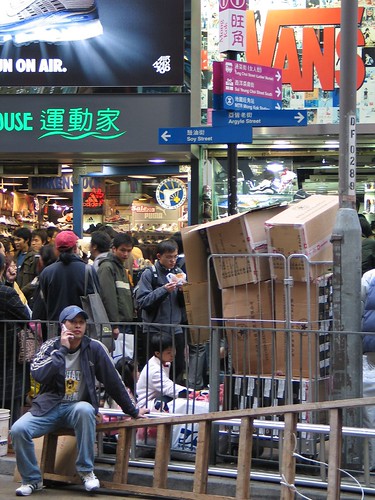Low-paid worker in Hong Kong

Hong Kong Confederation of Trade Unions (HKFTU), quoting the figures of the Department of Statistics, said that the number of low-wage and long-working-time workers has increased dramatically. The number of employees with a monthly wage below $3,000 has increased from 59,000 in 1997 to 141,000, by 138%. Most workers suffer long working time. The employees who work for 55 hours each week. The number increases by 66.3% and reached 833,000 last year.
HKCTU points out that employees with less than a monthly wage of $5,000 increase in number from 307,000 in 1997 to 528,000 last year, by 71.8%. The Chief Secretrary of HKCTU Lee Cheuk Yan said that the proportion of workers with a monthly wage of $3,000 to the entire workforce increases from 1.9% to 4.1%. Apparently, low wage earners experience "downward mobility". The size of long-time workers expands dramatically from 501,000 in 1997 to 833,000 last year. Most of them are women workers, increasing from 201,000 to 383,000 in number, by 90.5%.
Lee Sai Kwan, aged 50, is one of the people undergoing downward mobility. He earned HK$18,000 monthly as a technical officer of the PCCW (the biggest phone and internet service provider). He was sacked in 2002. He had worked as contract worker or security officer with a monthly wage of HK$9,000. Now he is unemployed.
As Lee Cheuk Yan said, more women go out to work. And more new immigrants to Hong Kong create an oversupply of low-skilled workers. Their wage level is persistently repressed. He urged Hong Kong government to set minimum wage and standard labor time as soon as possible. And it should evaluate the current labor laws in order to strengthen the protection for employees.
The Social Welfare Department launched a six-months program of "Yanhiu Program" last year. The single welfare recipient with children aged between 12 and 14 is required to get a paid job not less than 32 hours per month. Over 7,300 people have joined this program until January this year. About 1,6000 people got full-time or part-time jobs.
According to a research report published by the "Alliance concerning social welfare policy evaluation", most participants think that the program is not only unable to assist them to integrate into the society, but also it deprives them of time for taking care of children. What they could do is low-paid job and it makes the problem of employed poverty even worse.
Source in Chinese
Photo: Quasimime






